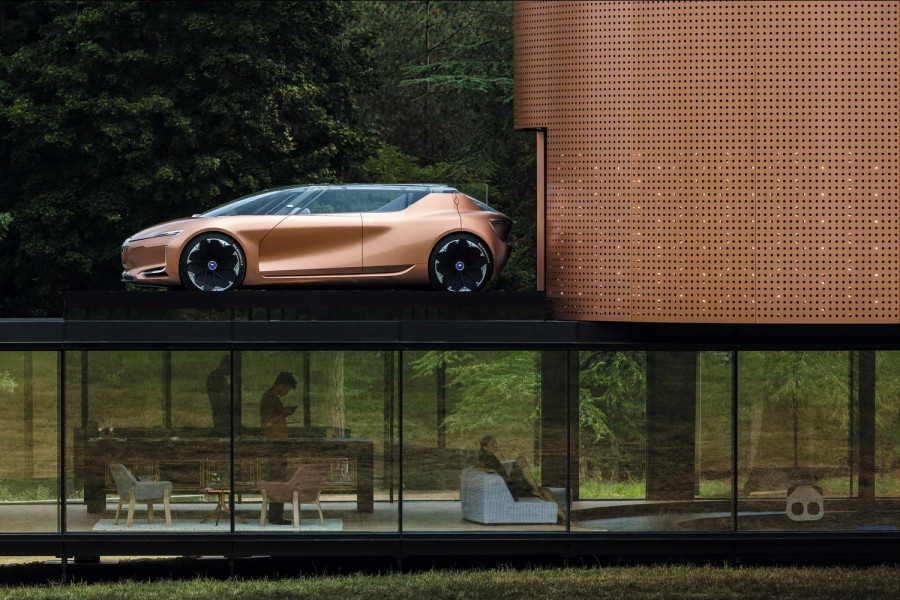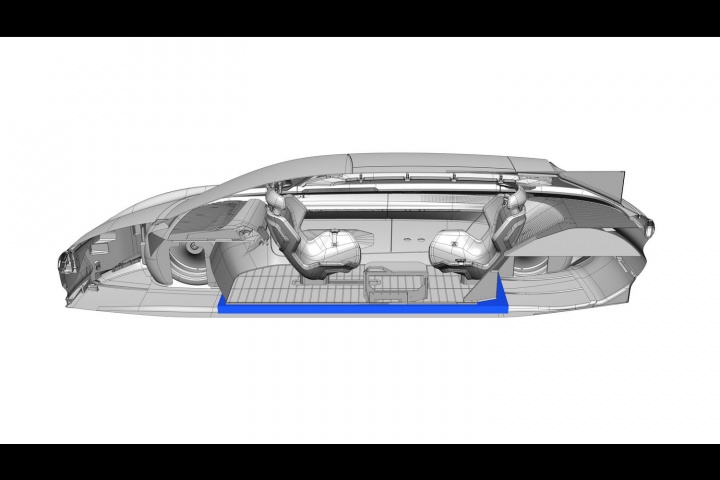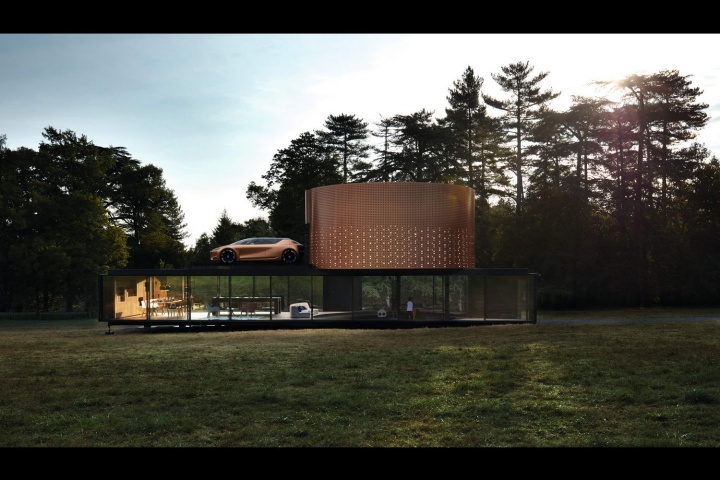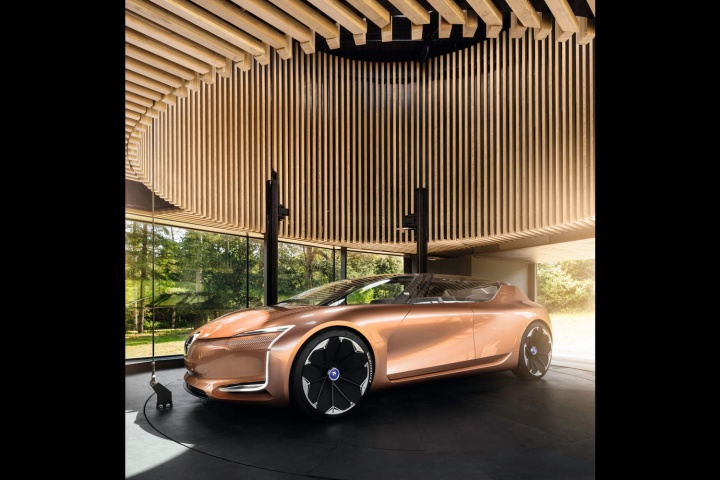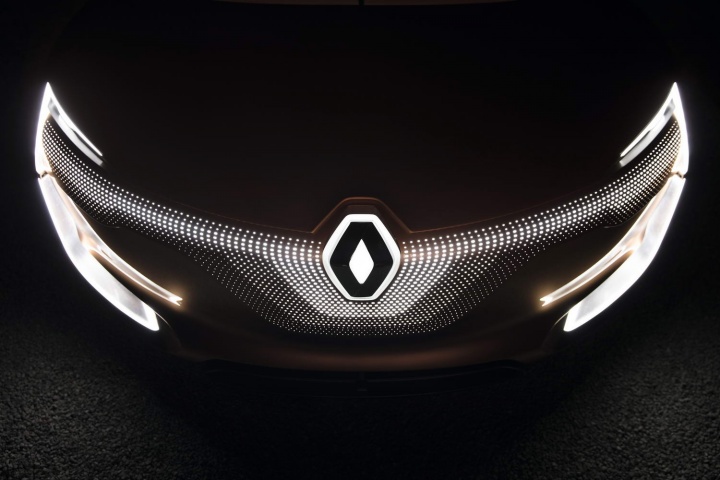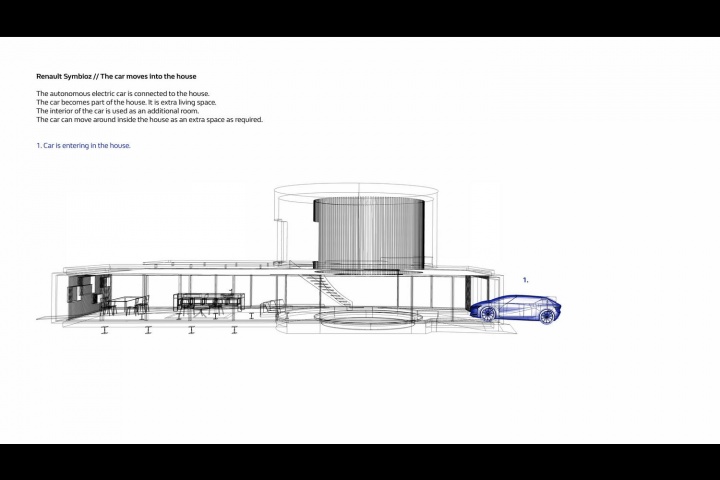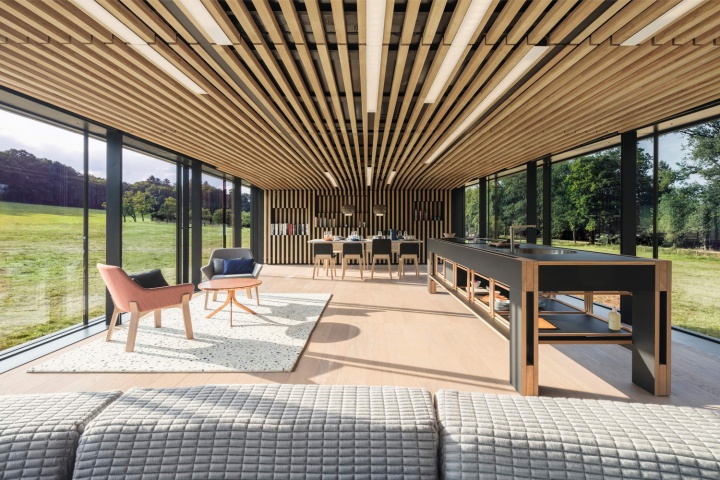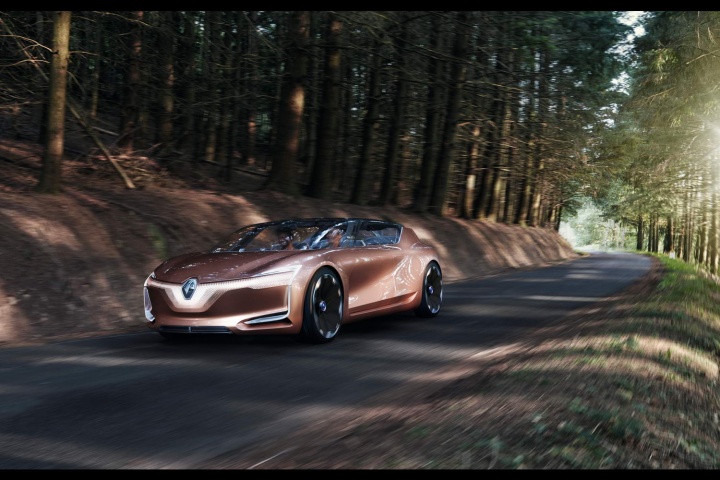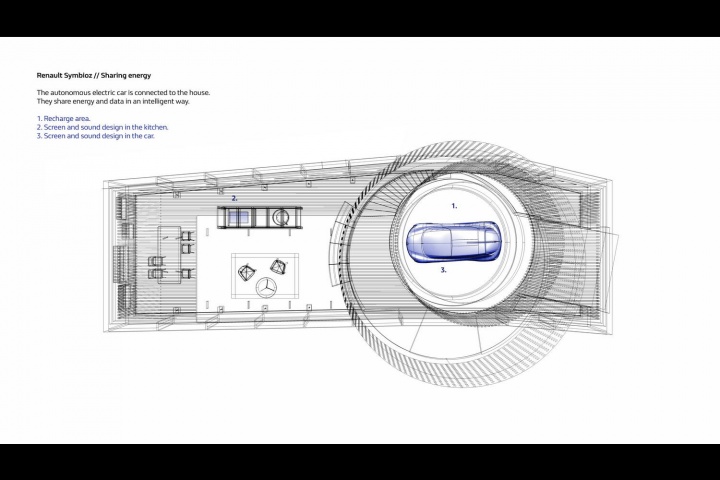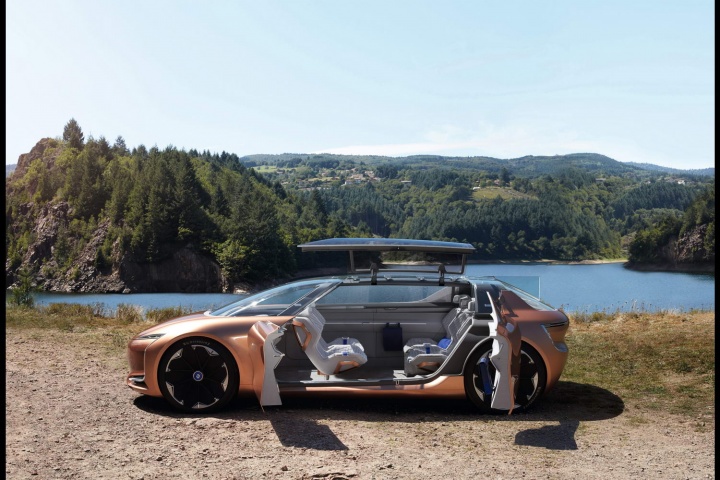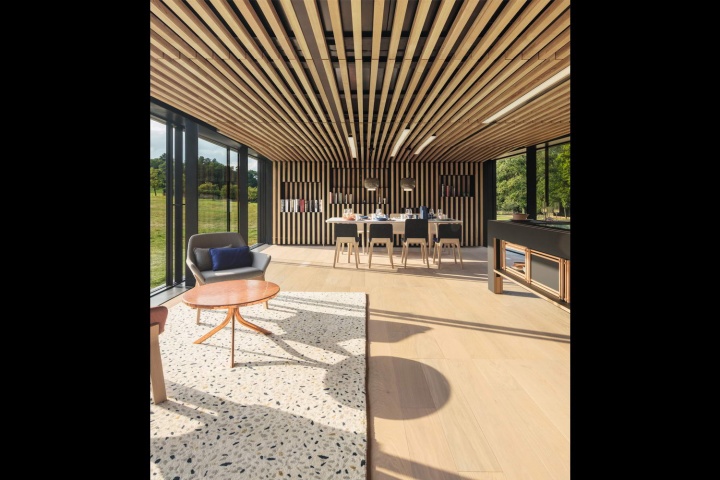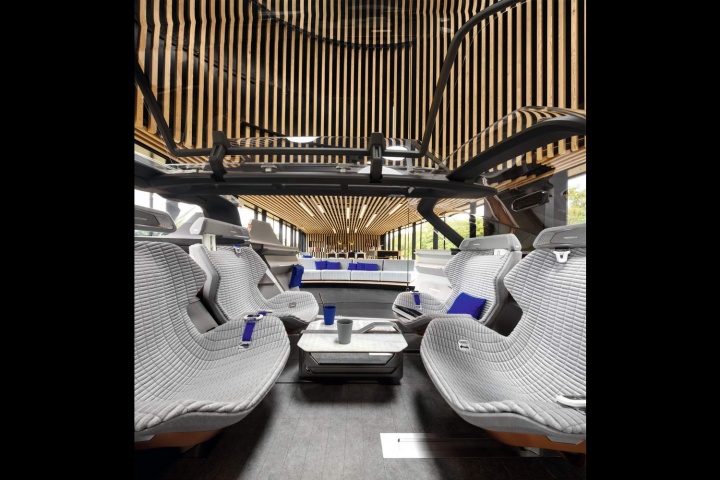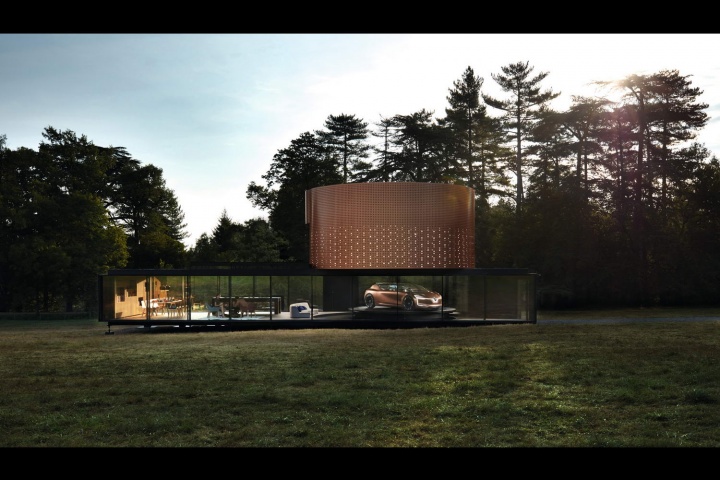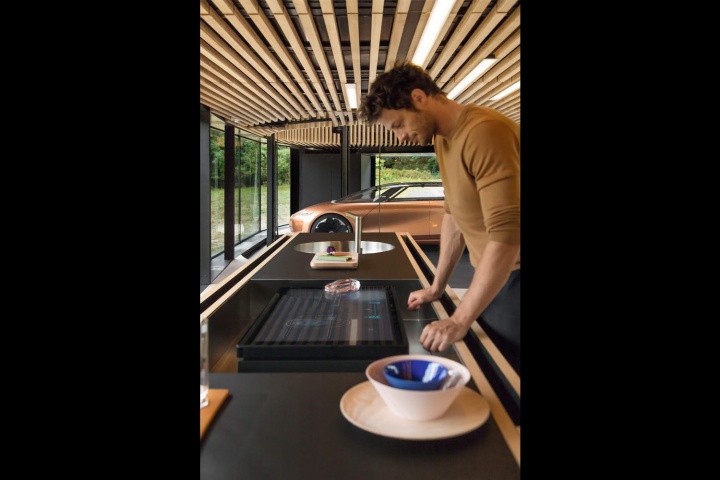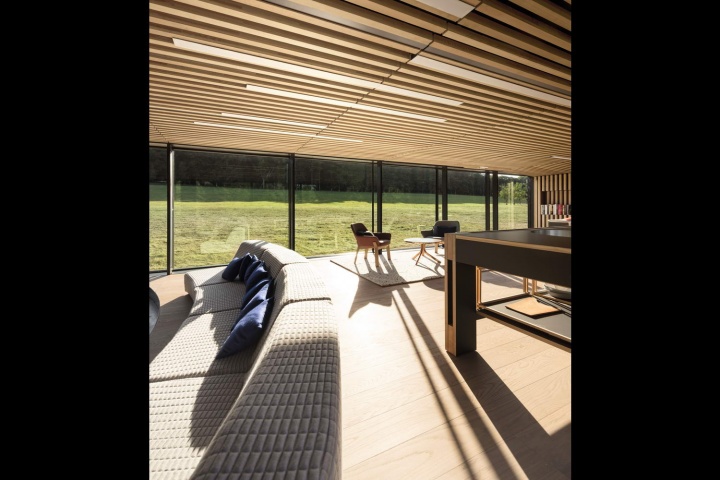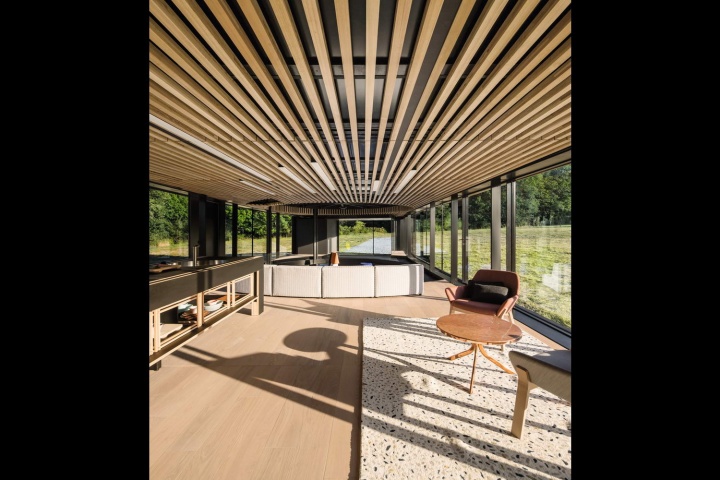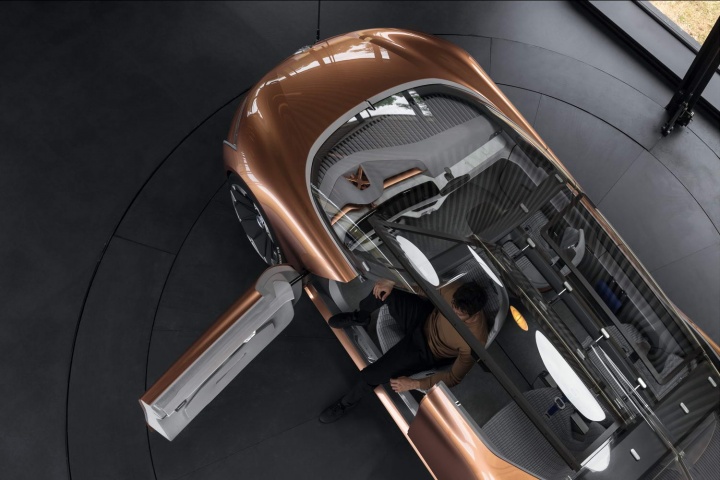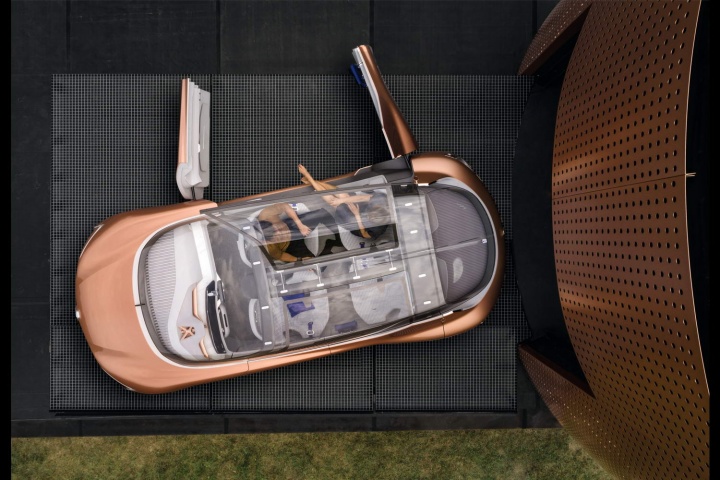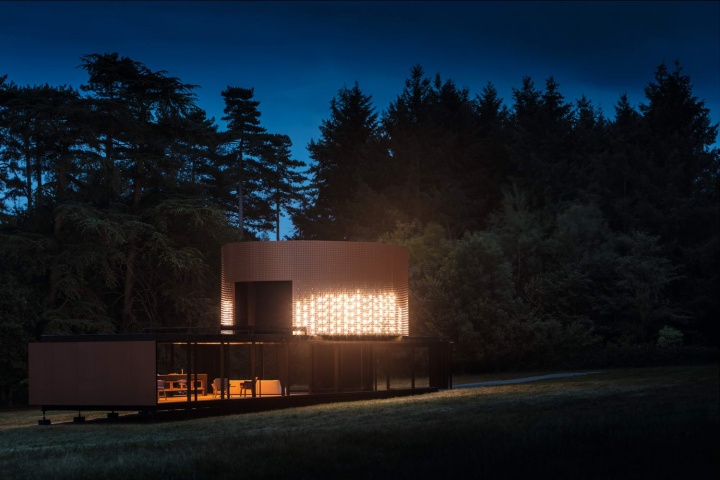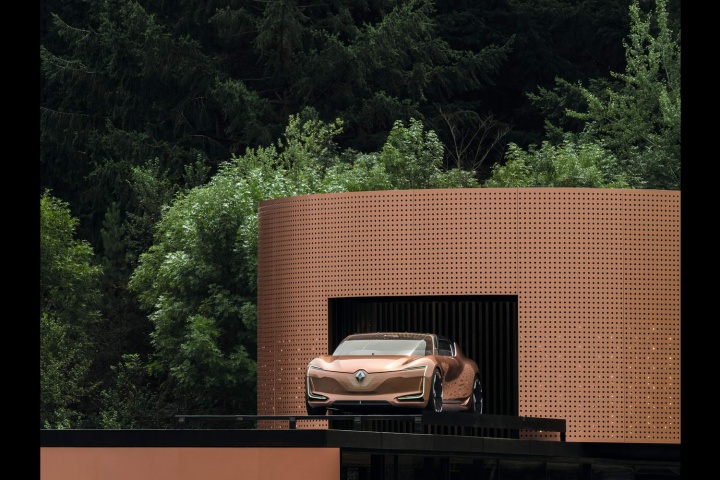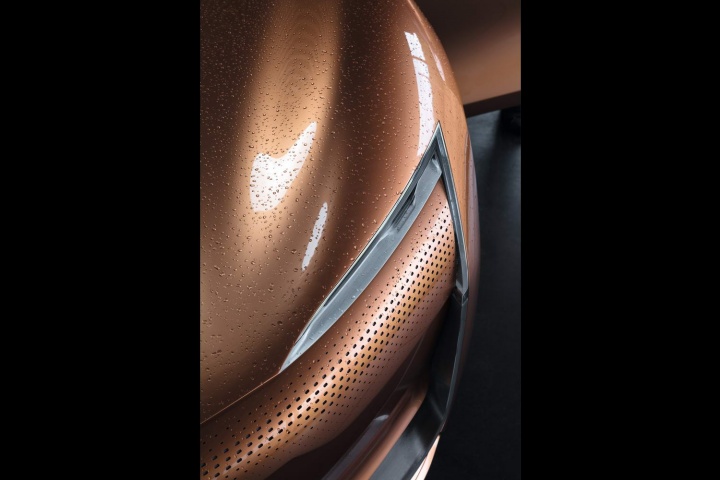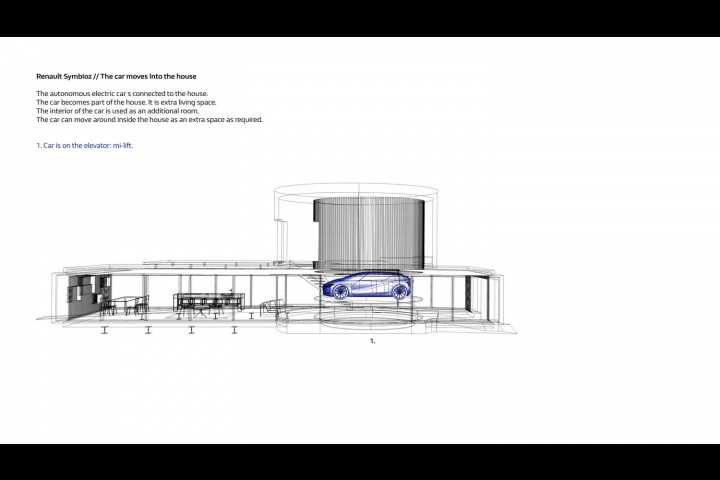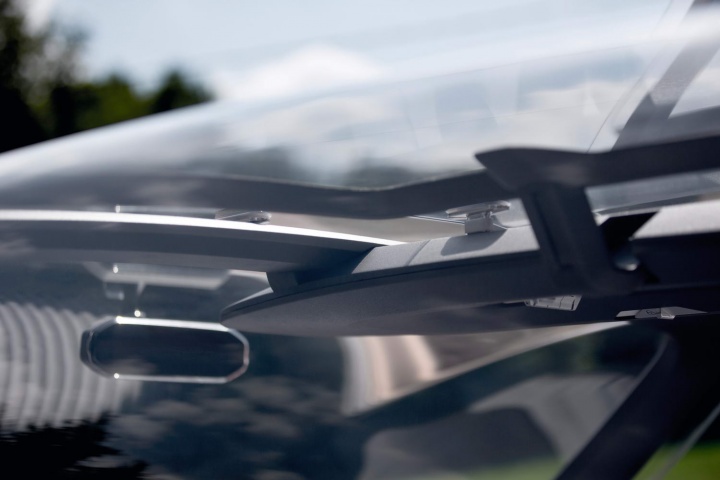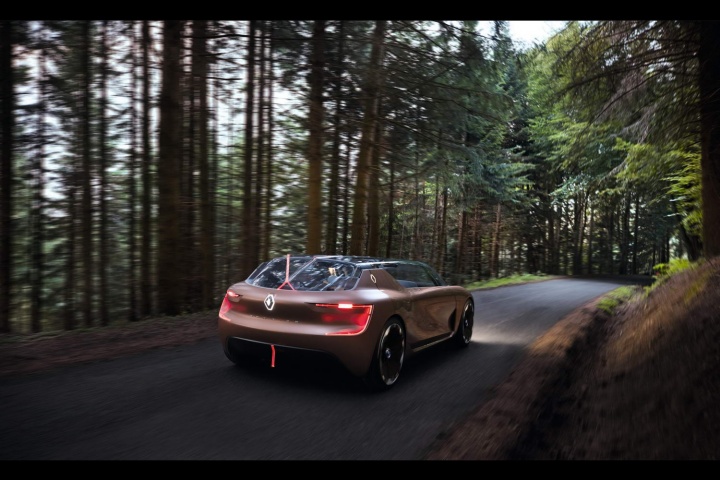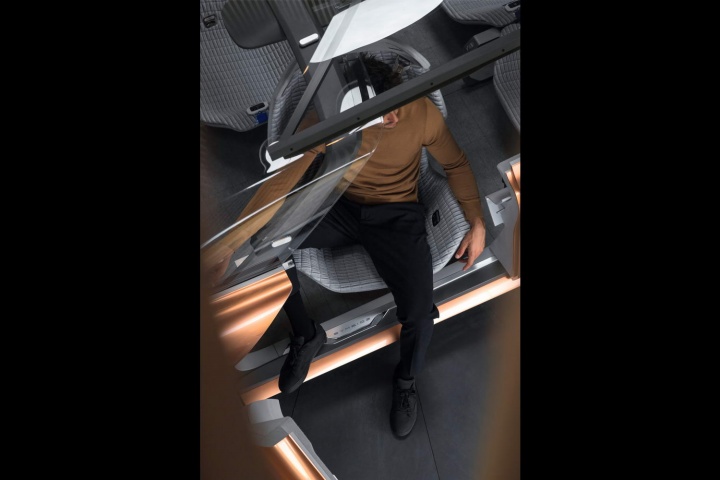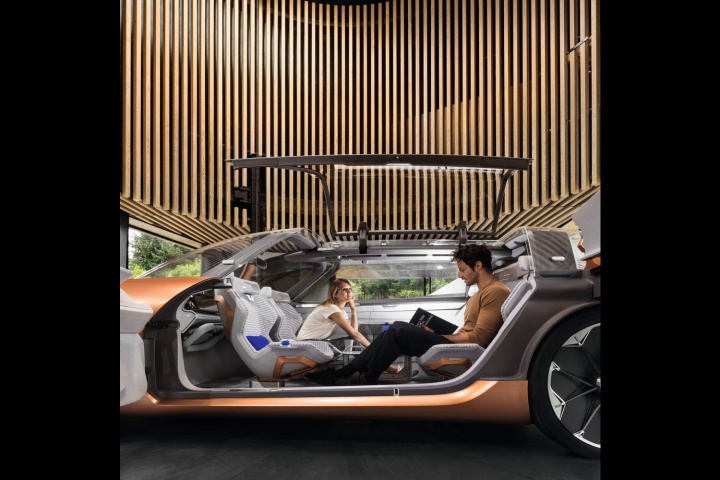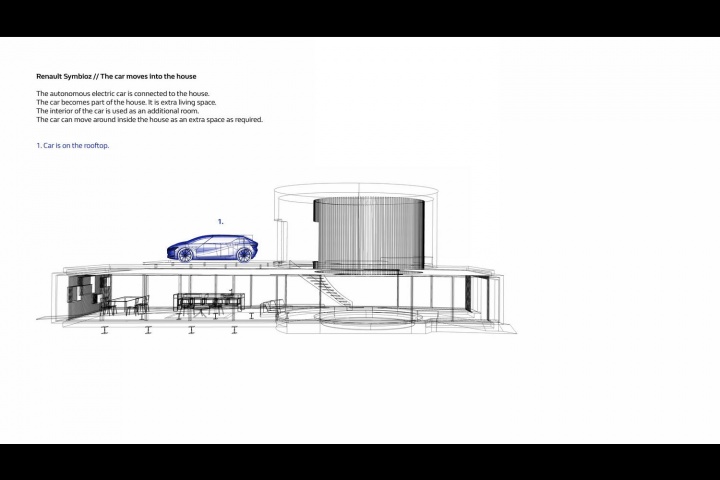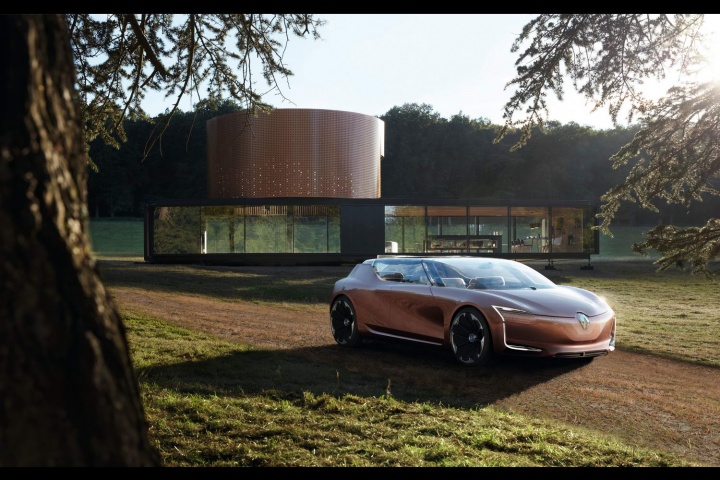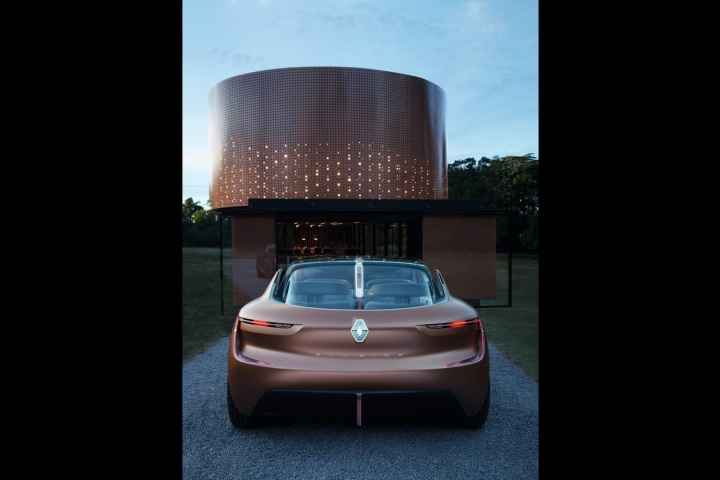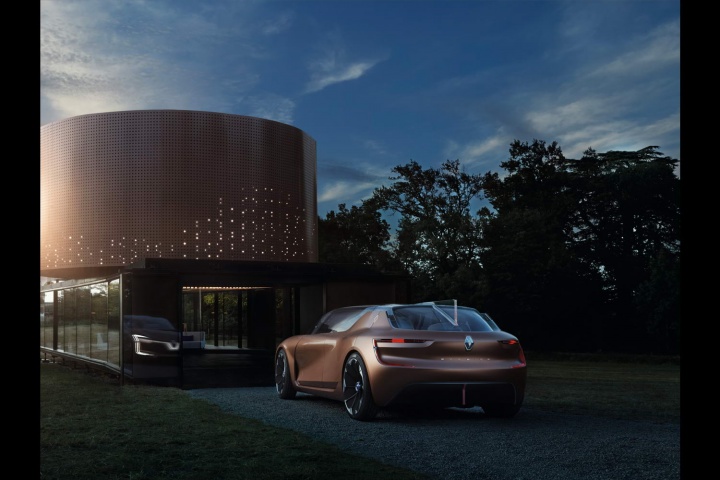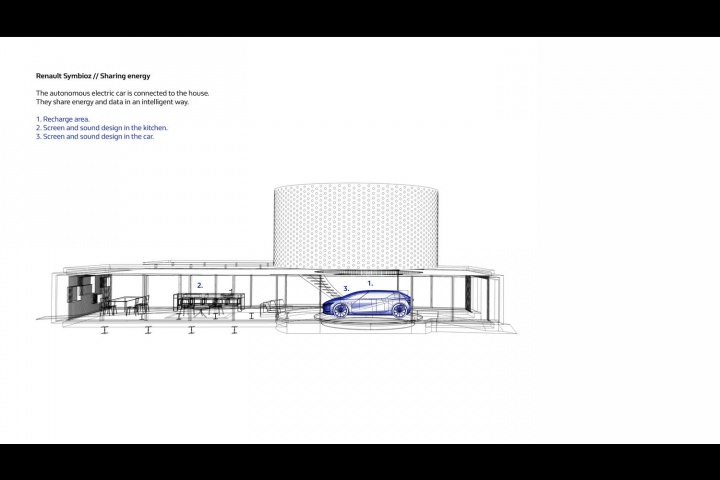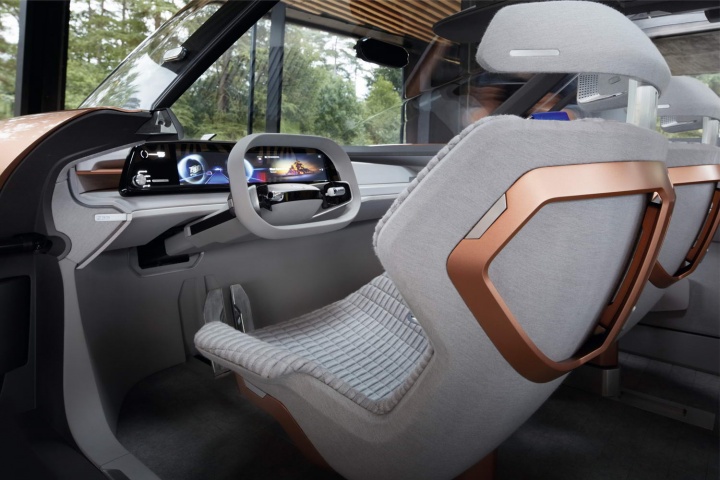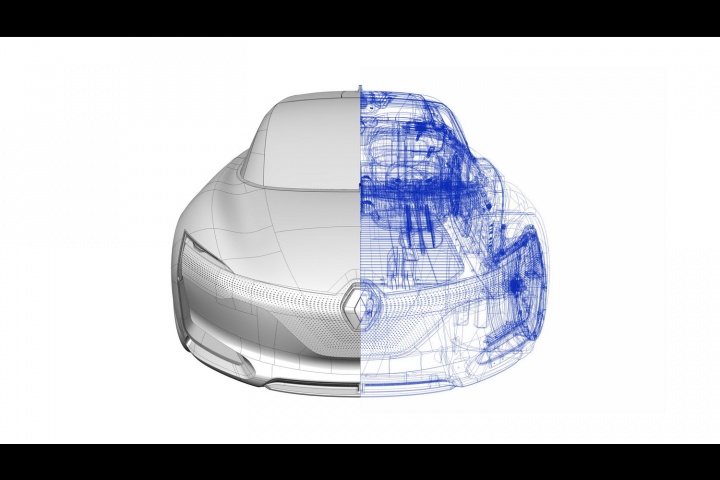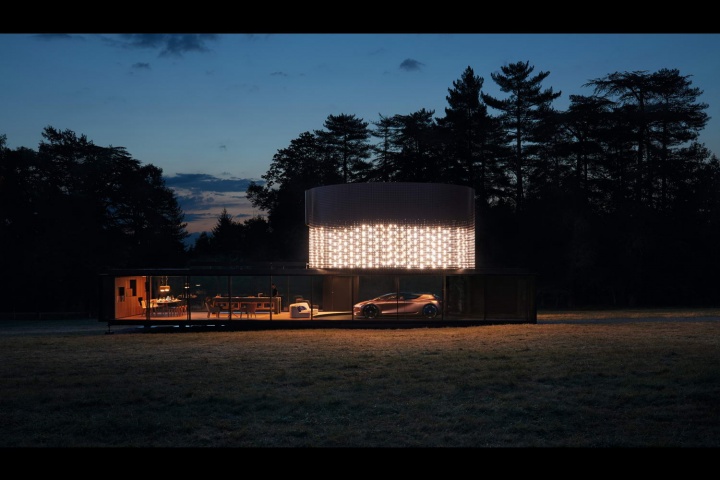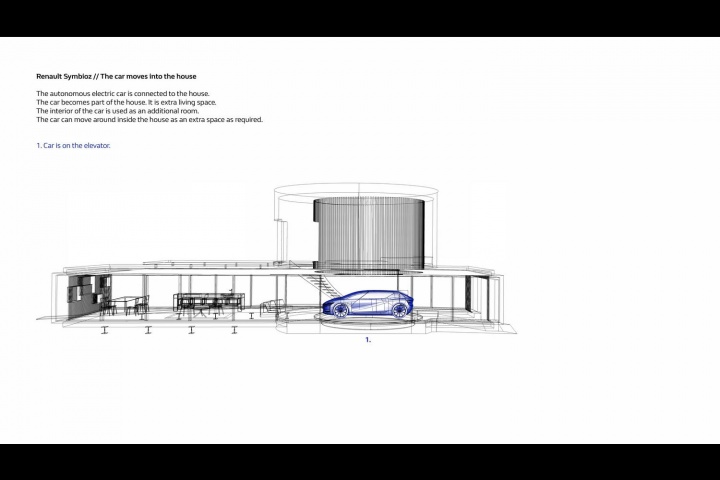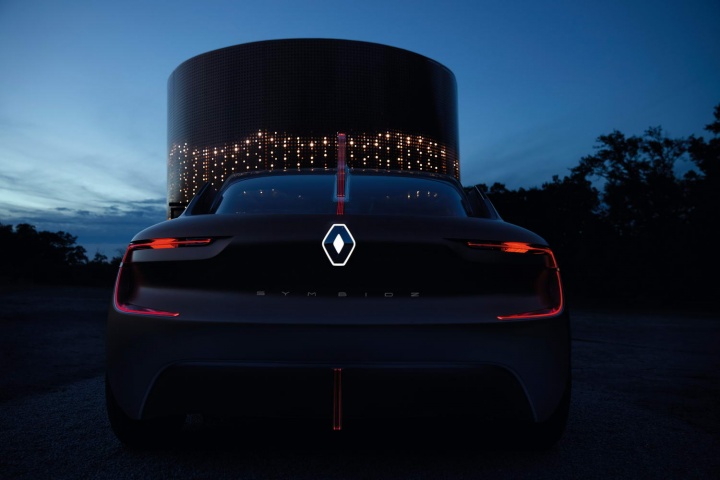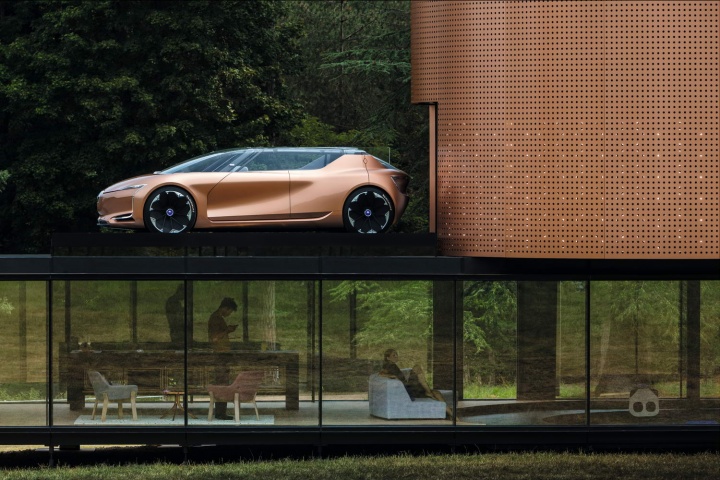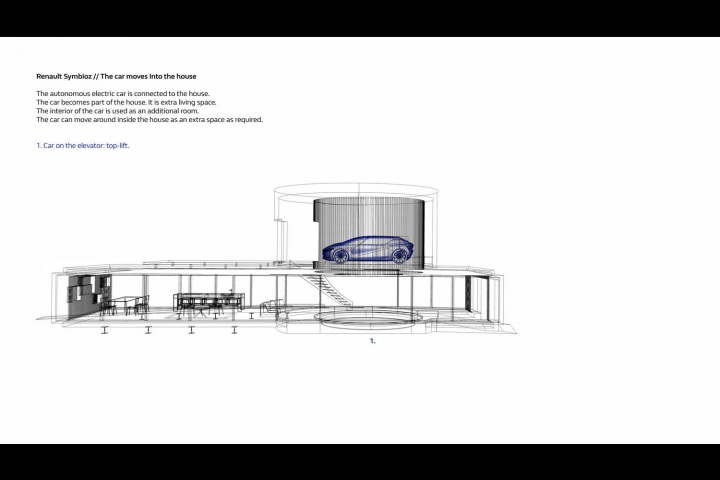What's the news?
This is Renault's Frankfurt show star, the Symbioz concept. It's sort of a two-part display, made up of a dramatic main vehicle that previews the French firm's idea of a 2030 EV that's connected to our homes - and indeed, so much a part of the home that it forms a mobile room for the house - while there's also a Symbioz Demo Car accompanying it, which is more like the EVs we'll have from Renault in 2023.
Exterior
At 4.7 metres long, 1.98 metres wide and 1.35 metres high, the Symbioz is a dramatic, one-box shape befitting of a futuristic concept car. The top half of the vehicle is dominated by glass with the minimum of structural items, said to be 'floating' and architecturally inspired - while the bottom half features muscular, flowing lines and is made of carbon fibre, and finished in two shades of copper. Typical Renault C-shaped lighting can be spotted front and rear, while the Diamond logos front, rear and sides light up when the Symbioz is running in autonomous mode. Our favourite feature is that tail-fin on the rear screen, which incorporates a third brake light, although the doors that swing open in opposing fashion, and then the glasshouse that hinges upwards, also lend plenty of visual drama to the Symbioz.
The Demo Car is less touted by Renault, although an image of it looks like a rather chunky, smoothed-off, oversized Twingo, so it's dramatic, but perhaps less eye-catching than its 2030 successor.
Interior
Perhaps the Symbioz's cleverest attribute - over and above its autonomous driving capabilities, or its highly connected, intelligent interior - is that, in the right sort of house, it forms a mobile room. No, really. Renault will show the Symbioz in a 'connected' house, which charges the car when it's parked on the lift and which can also accommodate the Renault moving through the building and out onto one of the rooftops. It's therefore described as an 'extra-mobile, modular and multi-purpose room' and not just a car. Renault believes this is how vehicles will play an even more important role in our everyday lives by 2030.
Mechanicals
The 2030 Symbioz is a zero-emissions electric vehicle, with a pair of permanent-magnet electric motors powering it. But rather than being mounted on each axle and providing four-wheel drive, they're both found at the back, powering a rear wheel apiece. Which means this EV is rear-wheel drive, blessing it with engaging driving characteristics.
Indeed, the Demo Car Symbioz for 2023, running much the same drivetrain, is said to have 500kW - which is a massive 680hp - and 660Nm. That leads to a conservatively quoted 0-100km/h time of 'less than six seconds', but more relevantly it can do more than 500km in real-world driving conditions on motorways. Renault says its 72kWh batteries can be inductively charged to 80 per cent of their capacity in just 20 minutes and that, by the time the 'full' Symbioz arrives in 2030, the performance, range and charging times will all have improved.
Anything else?
Stephane Janin, the director of design for Renault concept cars, said: "Studies show that cars are stationary and unoccupied 95 per cent of the time on average in major built-up areas. The Symbioz concept car symbolically combines the car with the home. The car becomes central to the family unit again and is used more extensively as a mobile, multi-purpose living space for all the family."

